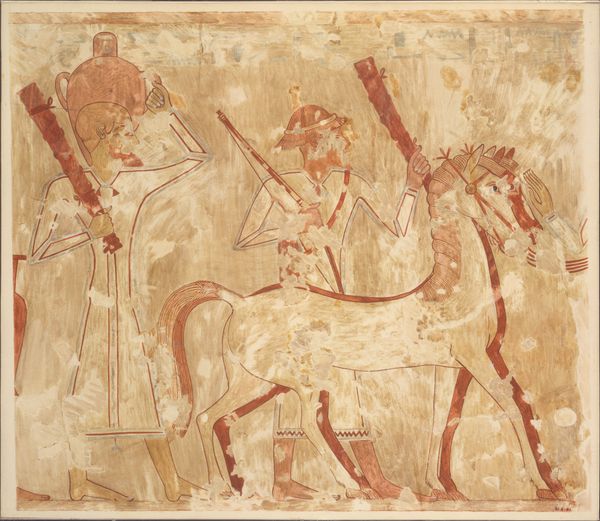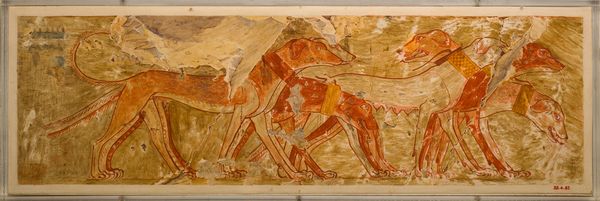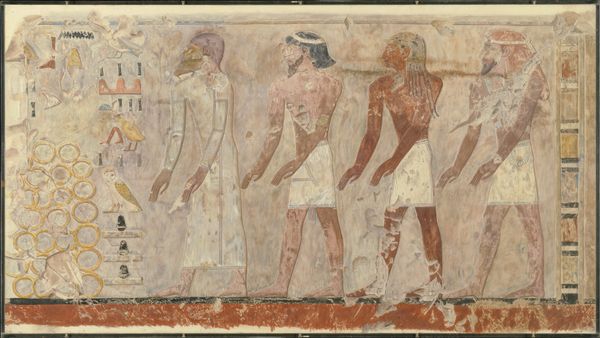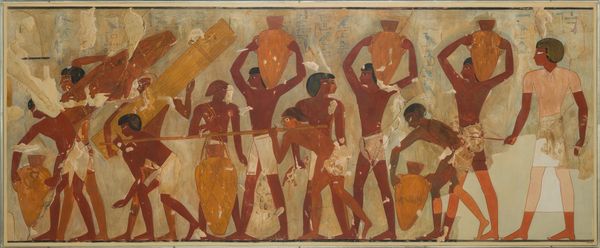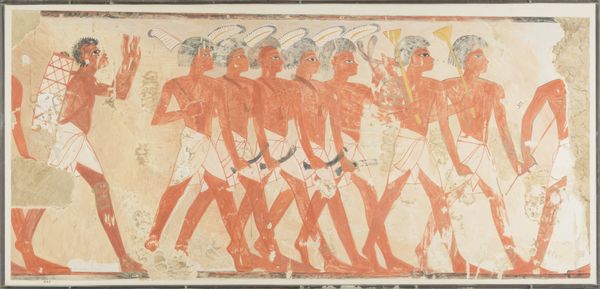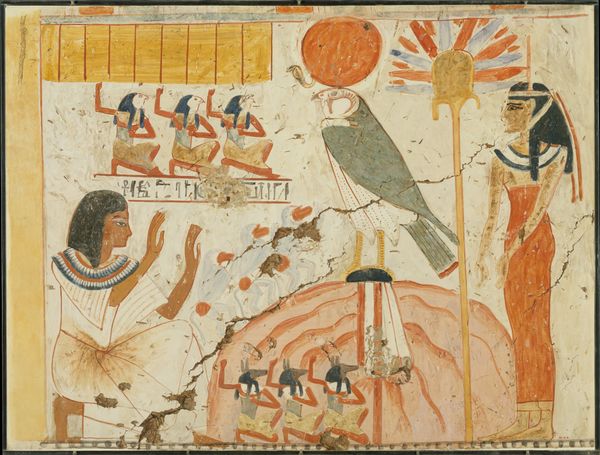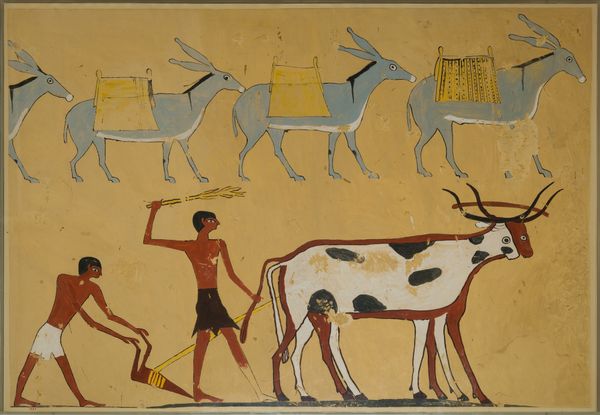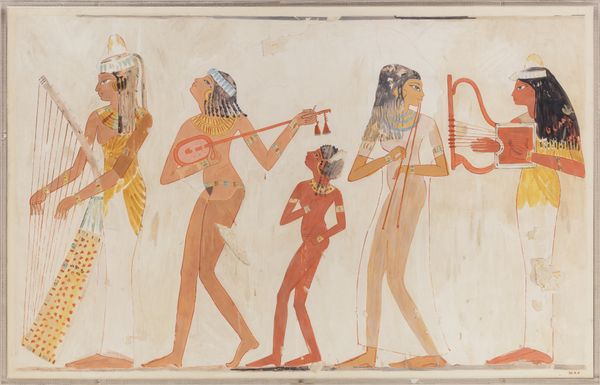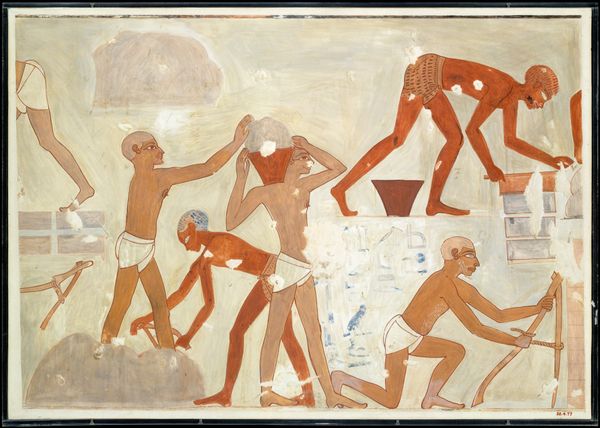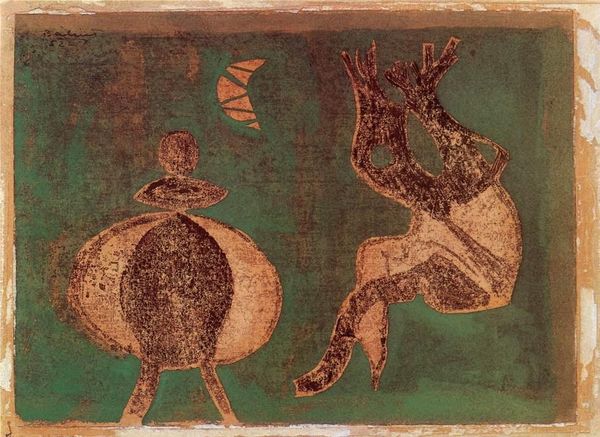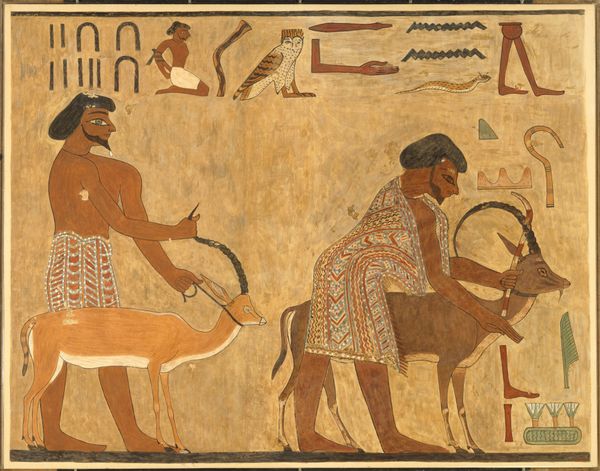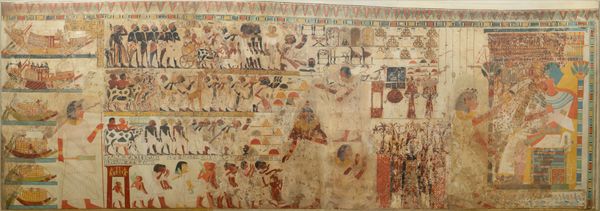
Nubians with a Giraffe and a Monkey, Tomb of Rekhmire 1504 BC
0:00
0:00
painting, fresco
#
portrait
#
water colours
#
narrative-art
#
painting
#
landscape
#
ancient-egyptian-art
#
figuration
#
fresco
#
egypt
#
ancient-mediterranean
#
men
#
history-painting
Dimensions: Facsimile: H. 47.5 × W. 58.5 cm (18 11/16 × 23 1/16 in.); Framed: H. 49.1 × W. 60 cm (19 5/16 × 23 5/8 in.); Scale. 1:1
Copyright: Public Domain
Curator: I find this fresco from the Tomb of Rekhmire, dating back to 1504 BC, utterly fascinating. It depicts Nubians with a Giraffe and a Monkey. The scene pulses with ancient life. Editor: Yes, it’s…interesting. My first thought is the raw, almost graphic quality of the ochre tones, offset by the neutral background, emphasizing the giraffe’s pattern, creating a striking effect that directs my attention. What material processes contributed to this aesthetic? Curator: Well, frescoes, of course, meant painting directly onto wet plaster, a medium which required both speed and precision. What truly intrigues me is what this says about intercultural exchange in ancient Egypt. Scenes like this served to portray Egypt's influence and relationships with neighboring regions. Editor: Precisely, these “gifts” imply labor, resources, and the embodied movement across physical terrain by these Nubians. What tools and skills were needed to capture and transport such exotic animals and other raw materials depicted? This labor surely underpinned the prestige and power of Rekhmire's position as vizier. Curator: Indeed, the imagery played a vital role in legitimizing Rekhmire's authority, highlighting the reach of Egyptian power and wealth during the New Kingdom period. It projects not only power but a curated vision of cultural hierarchy. Editor: I can also view this as an attempt to catalogue materials and commodities and even exotic labor that underpinned that social power. The monkey perched upon the giraffe is quite telling in that context. It's not simply an aesthetic flourish. Curator: I agree. And considering this was in a tomb, how would you evaluate the intended audience? It definitely speaks of a claim to power intended not just for the living, but for eternity. Editor: And power communicated through labor. A visualization of exploitation, rendered using pigments sourced through yet more labor. The materiality and its depiction, so directly connected. This offers so much to consider regarding the intertwined narratives of consumption and control. Curator: I concur. This painting encapsulates the intertwined narratives of power, cultural exchange, and artistic creation, resonating profoundly even millennia later. Editor: Right. Considering all the materials involved—from the giraffe's hide to the very pigment on the wall—one can consider the physical and symbolic layers of exploitation materialized. It’s a potent piece that speaks volumes about its time.
Comments
No comments
Be the first to comment and join the conversation on the ultimate creative platform.
